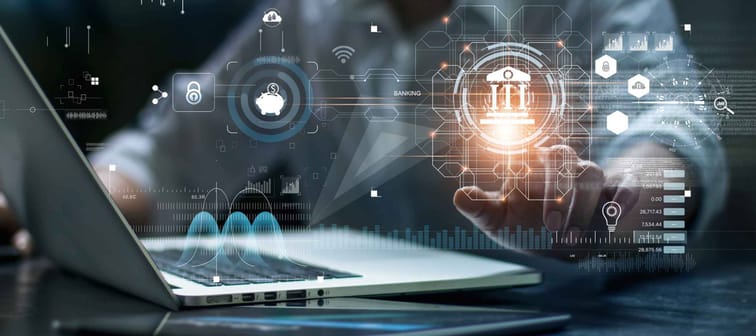1. Online banking will continue to replace local branches
The shift to online banking led banks to close nearly 9,000 branches in this decade. That is the biggest decline on record and a sign that consumers don't care as much about physical bank branches as they used to. And that trend isn't expected to stop.
If you read through the recent bank reviews here on Moneywise, you may notice that online banks tend to offer lower costs, higher interest rates, and a generally better customer experience compared to their brick-and-mortar competitors. CIT Bank, for example, is a great option for that.
Will local bank branches ever completely go away? That's unlikely unless our society goes completely cashless. A growing number of consumers prefer paying for goods and services with a card and mobile payments. But a lot of people still get paid in cash (think workers who rely on tips). They will always drive demand for some local branches.
However, the number of physical branches still has a long way to fall before it reaches a leveling-off point. As this happens, we will also see a larger percentage of banking transactions take place on computers and phones. As “digital natives” become the majority of the population (Novo is a good example of digital-only business banking), this trend will likely accelerate more in the coming decade.
CIT Bank. Member FDIC.
2. Faster electronic funds transfers
Networks such as Zelle offer near-instant funds transfers to accounts at participating banks. But same-day electronic funds transfers are still relatively difficult and sometimes expensive undertaking here in the United States. Beyond bank wires and a few peer-to-peer payment apps, we don't have a reliable same-day electronic payment method.
That's about to change, big time. Thanks to NACHA, the organization that governs the automated clearing house (ACH) system that carries the majority of electronic transfers, the foundations for same-day ACH have already been laid.
Under NACHA's same-day ACH rules, banks process settlements in three daily windows. This means sending funds can happen the same day. Most cases drawing funds, though, will still take two or three days. We expect NACHA to continue making rules that will allow for faster transfers.
3. Mobile payments will replace debit cards
While they have yet to completely catch on in the United States, mobile payments are the way of the future. As our phones' growing capabilities continue to shrink the thickness of our wallets, more and more payments will happen with a tap on a terminal instead of a swipe or a dip of a debit card.
Because of how the tokenization process works for mobile payments, these types of transactions are actually more secure than a card-based payment as long as you don't lose your phone. Expect to see a growing number of mobile-friendly payment terminals and an upward trend in mobile payments.
I've been paying with Google Pay when possible for a while now, and it is so fast and easy. If you have access to Apple Pay, Google Pay, Samsung Pay, Chase Pay or a similar app, give it a try! For you, the future can start today!
4. A.I.-driven suggestions and advice
In 2017, I watched as a human and a computer interacted to find a new credit card. I recorded the display by IBM Watson at the LendIt conference and felt like I was watching something more akin to Star Trek than a banking and lending convention.
Check it out:
While this type of artificial intelligence (AI) is not yet available for the masses, it worked well enough for this live demonstration. And it likely isn't too far away from showing up on a screen near you.
5. Affordable banking services for low-income Americans
You may want to put this under the “hopeful” column for future predictions. We are now at a point where the technology may be able to fill the gap in the finance system that leaves millions of people unbanked and underbanked.
Low-income Americans pay a small fortune in both fees and time for money transfer, check cashing, payday lending and other like services. In an ideal future, everyone can get access to an affordable bank account so they can deposit a check and access the funds without ever paying a fee.
Problems with financial services for the low-income population are serious. At the recent CFSI EMERGE conference, I had an opportunity to use check cashing and payday lending services as part of an educational program. It was an eye-opening experience:
Technology will drive the next wave of change in banking
Technology-led a shift from tellers to ATMs and from bank branches to the internet. And technology will remain implicit in the next wave of change for banking.
If you have chatted with online customer service at any point, you have likely already interacted with artificial intelligence. Who knows — we might have our mortgages approved by AI-driven bots before the end of the decade!
One thing is certain: Technology, computing, and mobile devices are a driving force in the future of banking. And that force is not slowing down anytime soon.







